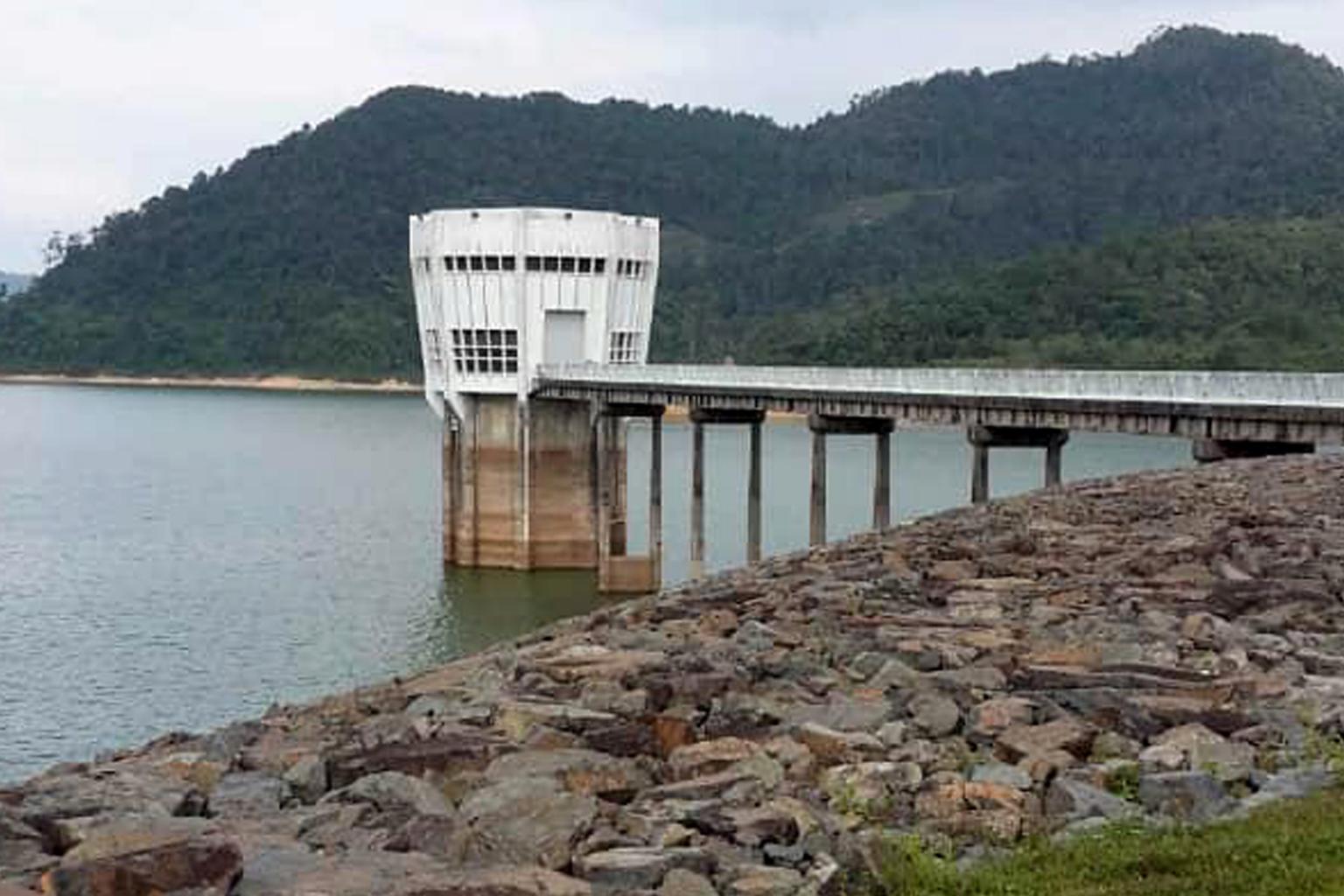Linggiu Reservoir, Singapore's main water source in Malaysia, back at healthy levels for first time since 2016
Sign up now: Get ST's newsletters delivered to your inbox

The Linggiu Reservoir seen on Sept 28, 2019. The reservoir's water levels reached a historic low of 20 per cent in 2016.
PHOTO: PUB
Follow topic:
SINGAPORE - Recent rain has replenished Singapore's main water source in Malaysia, with the Linggiu Reservoir in Johor now full, said Prime Minister Lee Hsien Loong on Thursday (Feb 4).
This is the first time water levels have recovered to healthy levels following a dry spell in 2016 that saw water levels plunging to a historic low of 20 per cent.
National water agency PUB considers healthy levels to be between 80 and 90 per cent.
Last month was the wettest January since 1893, PM Lee said during the official opening of Singapore's fourth desalination facility - the Keppel Marina East Desalination Plant.
The Straits Times had reported earlier that the wet weather was mainly due to a monsoon surge, although the La Niña climate phenomenon could have played a role.
But PM Lee said that with climate change making weather conditions more volatile, Singapore cannot solely rely on rainfall to meet its water needs.
Citing the dry spell in 2016, he said: "I was really worried, and tracking the situation daily, because there was a real risk to our water supply.
"It was a vivid reminder of why we have to be obsessed with saving water, and make every drop count."
Linggiu Reservoir, which began operations in 1995, saw healthy water levels for almost 20 years, before they dropped below 50 per cent in 2015 to reach a historic low of 20 per cent in 2016.
Singapore built the reservoir to enable reliable abstraction of water from Johor River.
With the opening of the Keppel Marina East Desalination Plant, Singapore now has a facility here with the capability to treat both sea and reservoir water.
PM Lee said Singapore has expanded its desalination capacity because water demand continues to grow.
The Republic currently consumes 430 million gallons of water a day, a figure that is expected to almost double in the next 30 years.
"Local catchments and water imported from Malaysia are already insufficient to meet our daily needs," he said.
Singapore has supplemented its supply with recycled used water (Newater) and desalination, he added, crediting the PUB engineers for their planning, research and innovation efforts.
Mr Lee also said that the national water agency has plans to repurpose the now-defunct Bukit Timah Waterworks, built in 1889, as a visitor centre.
This is an excellent idea, he said, adding: "It will be good to preserve something of what we have inherited, and which has served us well. So that every generation can understand the long journey that we have been on, and appreciate how we have got here."
Water is not an inexhaustible gift of nature for Singapore, said Mr Lee.
"It is a strategic and scarce resource, and also a precious fruit of our labours, always to be husbanded and used wisely," he added, saying that the production of each additional drop of water gets increasingly challenging.
"We require more infrastructure, new technologies, more extensive treatment, all of which inevitably means a higher incremental cost,"he said.
Mr Lee urged Singaporeans to do their part in saving water. PUB is installing some 300,000 smart water meters islandwide to help households track their water consumption, he said.
"These will provide households with more detailed water consumption data, so that you can better manage your water usage, and save on your water bills," he added.

